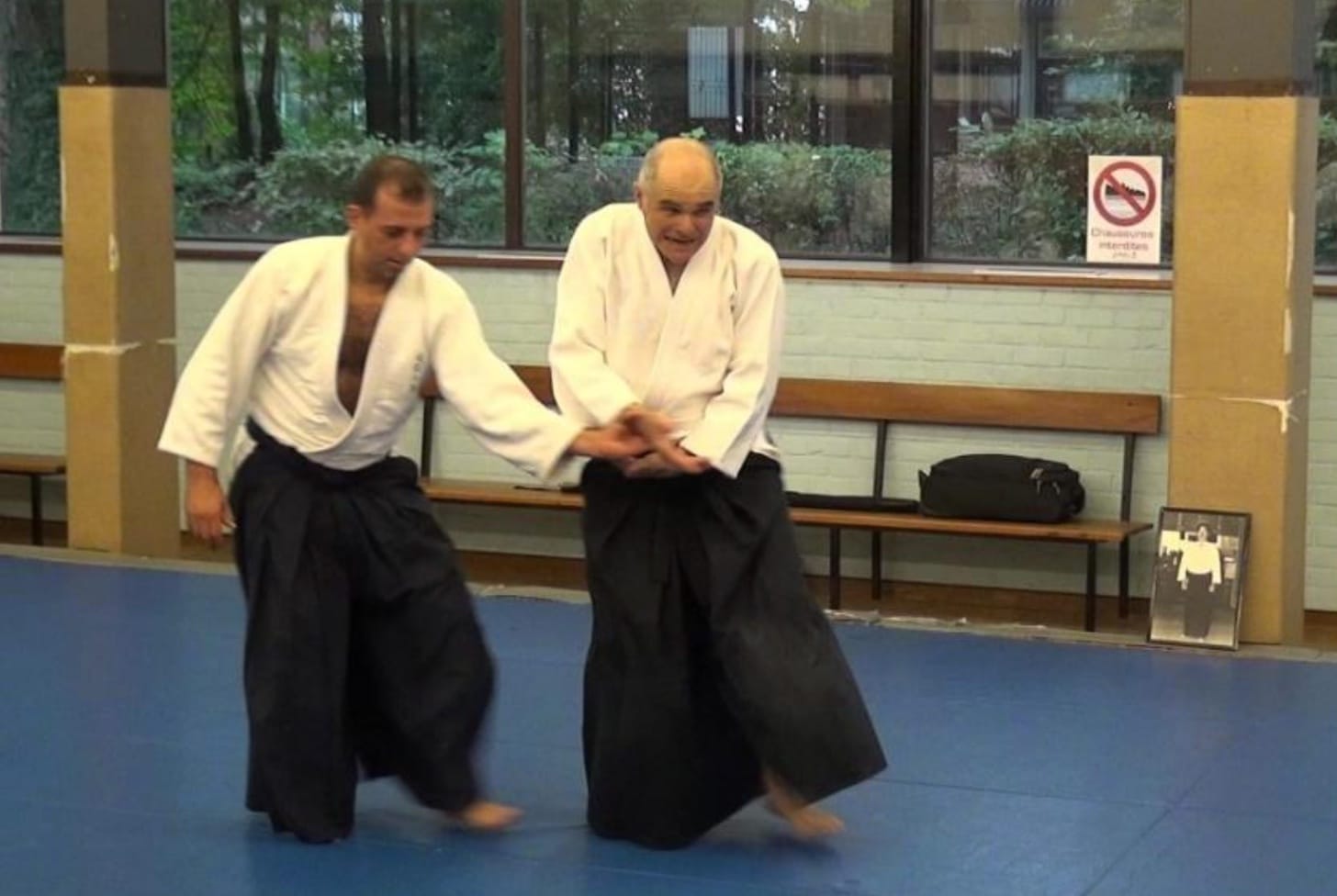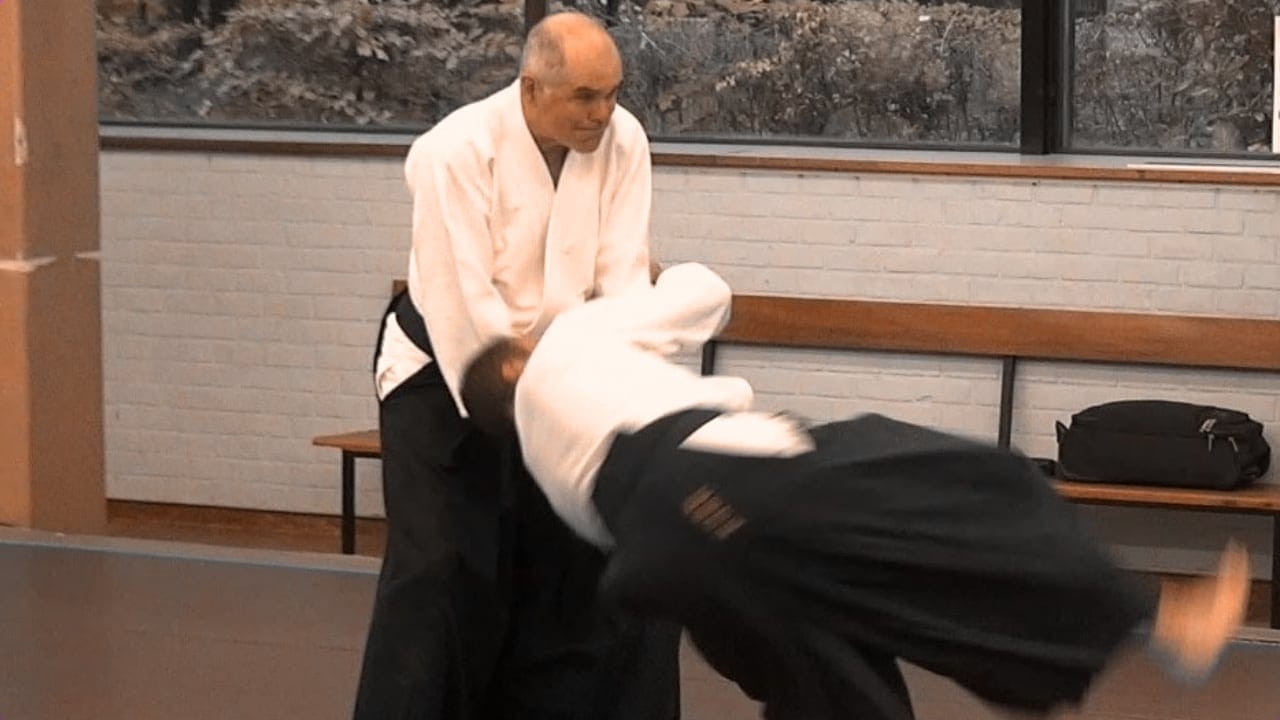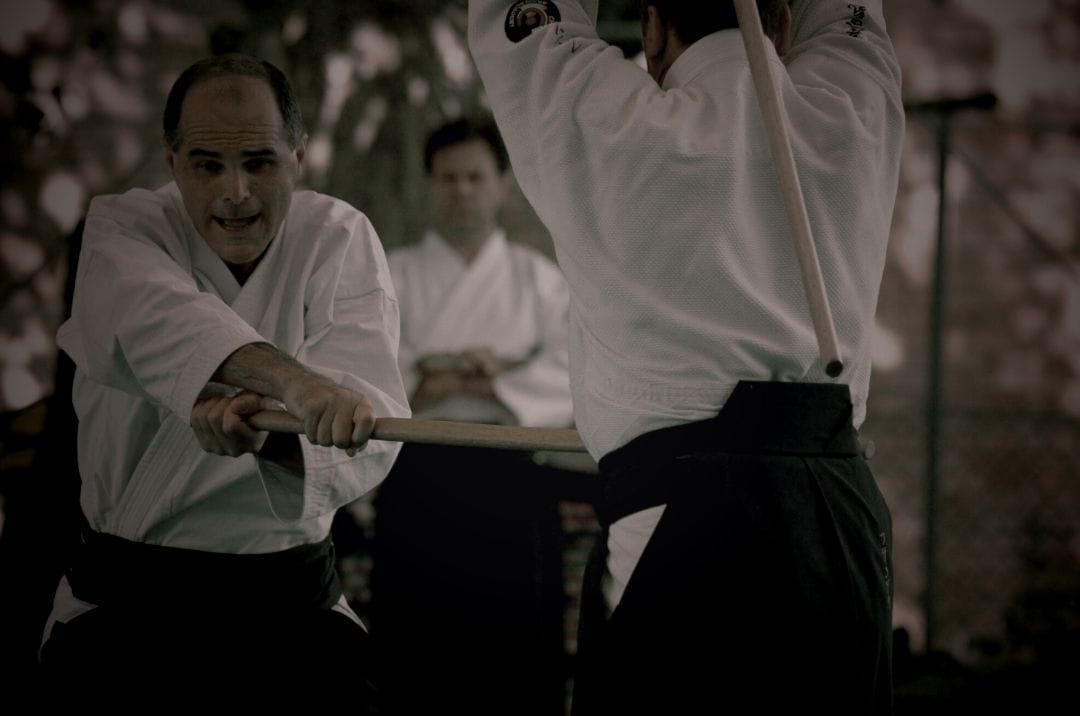Travelling is all very well, but travelling in the middle of an Aikido movement is a bad trip, preventing the success of the technique and putting tori in danger.
The level of knowledge of an Aikido practitioner, and his understanding of the principle he applies, can be seen in the way his body is traced in space. This pattern is both necessary and rigorous, obeying inexorable laws. Tori cannot put a foot out of the way of a technique. If he does, he's not doing Aikido.
There's a basic rule : every Aikido movement is a rotation with Tori at its center. Tori must therefore take - in an unchanging movement - the center of the movement and occupy it until the moment the movement ends. If he leaves the technique's center of rotation even slightly, and no matter how elegant his gestures, tori begins to travel. His movement becomes buoyant, the Aiki dynamic is broken and he exposes himself to uke's resistance and possible counter-techniques, as well as to the strikes of other opponents, which is even more dangerous.
The following video emphasizes this point :
As far as the technique itself is concerned, this is kote gaeshi.
Kote gaeshi can be performed in two ways : either by grasping uke's hand from above, or by grasping it from below. In this case, the underhand grip is used :

Warning :
This underhand grip must be performed with the same lever shape as the overhand grip. In other words, it must be carried out in such a way as to transmit the same spin to uke's forearm (kote) that causes him to fall. Whether uke's hand is gripped from above or below, the pressure points exerted on his hand are the same, which is why the spin is identical. It's important to understand this, otherwise the technique won't work.


